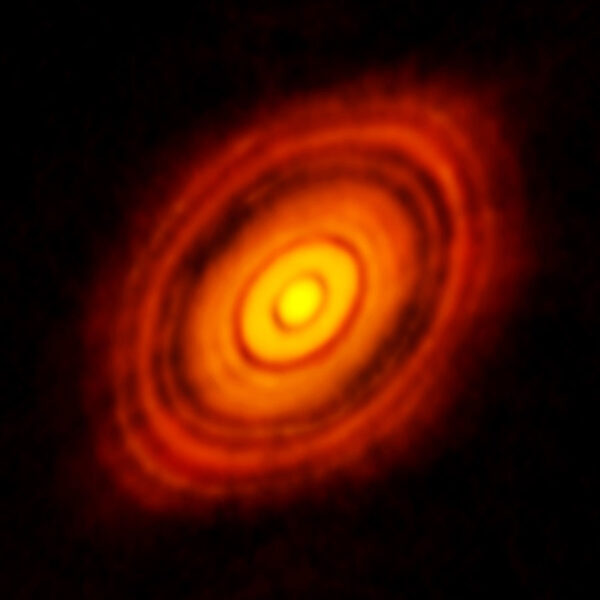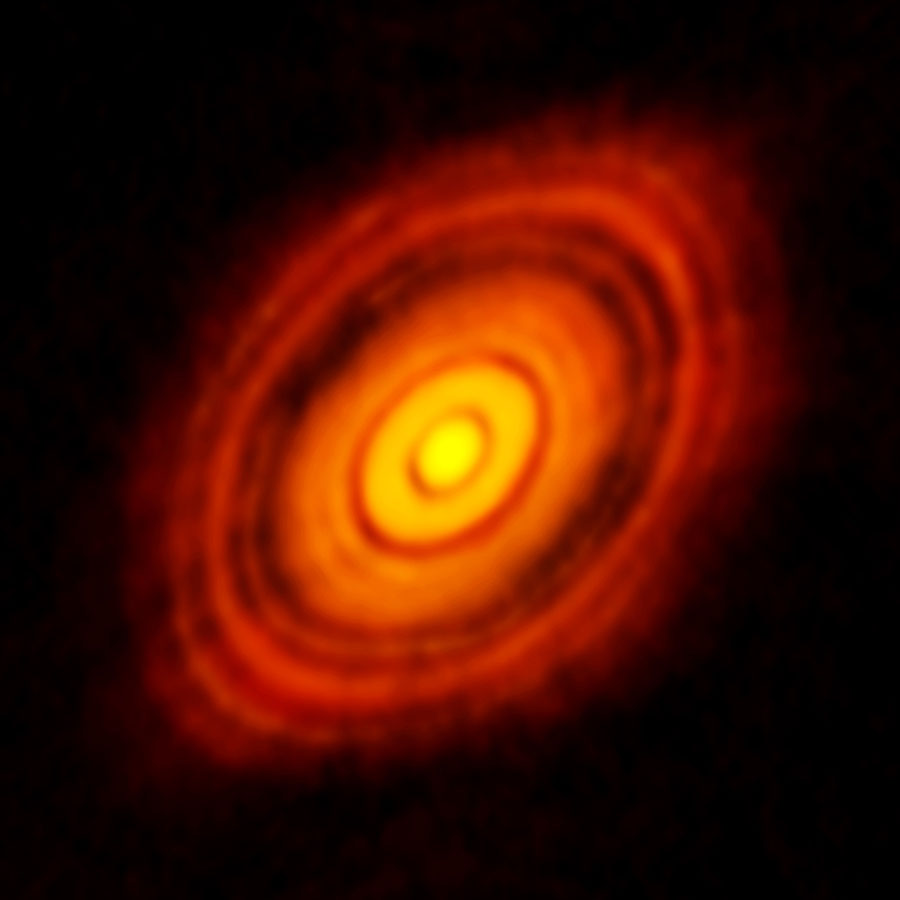Hubble: NASA / ESA / and Q.D. Wang (University of Massachusetts, Amherst); Spitzer: NASA / Jet Propulsion Laboratory / S. Stolovy (Spitzer Science Center / Caltech)
Stars and their planets are born in dense clouds of gas throughout our galaxy, but at the crowded center, birthing new stars is difficult. Now, despite the proximity of the supermassive black hole that lurks at the heart of our galaxy, scientists have detected a plethora of star-forming cores, some of which might even contain baby planets, at the center of the Milky Way.
A team of astronomers observed a region called the Central Molecular Zone (CMZ), a region of dense gas clouds within 800 light-years of the galactic center. The goal: to understand what star formation looks like in this extreme environment, characterized by copious amounts of cosmic radiation, intense turbulence, and effects from the central supermassive black hole.
Using the Atacama Large Millimeter Array (ALMA) in Chile, the team observed three dense gas clouds with higher resolution and sensitivity than ever before. Not only did they detect more than 500 dense regions where stars are forming, but the nature of those sources indicates the potential presence of protoplanetary disks — the swirling disks of gas and dust where planets come together. The results reveal active star and planet formation in an environment radically different from our own arm of the Milky Way.
Check out this interactive viewer where you can zoom in on real data of the three clouds.
Scores of Stars
The CMZ hosts an impressive 60 million solar masses of gas within a complex of giant gaseous clouds that contain almost 80% of all dense gas in the galaxy. Yet despite being populated with these molecular clouds — nebulous regions where gas and dust can collapse to form baby stars — astronomers have previously estimated that the CMZ forms stars 10 times less efficiently than farther out in the galaxy’s disk.
However, those observations were based on emission from massive stars, which are easier to observe but rarer. The ALMA survey instead probed the formation of stars less than twice the Sun’s mass.
ALMA uses 66 smaller antennas spread out over a few kilometers to simulate a larger telescope, allowing it to observe incredible detail at faraway distances. Using ALMA, the team resolved features in the CMZ as close as 2,000 astronomical units apart, or 50 times the size of Pluto’s orbit — from more than 25,000 light years away.
In the survey, known as the Dual-band Unified Exploration of three CMZ Clouds (DUET), astronomers specifically looked for emission at two distinct wavelengths of light. “The single-band survey is like observing the world with only one color, which is quite limited,” says Fengwei Xu (Peking University, China), who led the study published in Astronomy & Astrophysics. “The dual-band survey is equipping us with dual-color eyes to probe the world with two colors.”
“This information is the key to understanding the nature of dense cores that we observed,” Xu explains. Among other things, the data translate to an estimate of how many low-mass stars form per year. Based on these new data, Xu and colleagues conclude that previous studies severely underestimated the star formation rate. Instead, they found an abundance of stellar nurseries.
“The current study’s focus on compiling a consensus of low-mass sources offers valuable insight into . . . the broader question of how star formation proceeds in the CMZ,” says Natalie Butterfield (National Radio Astronomy Observatory), who was not involved in the study. For example, she says, the results could be in line with the idea that, relative to the most massive stars, more low-mass stars form in the CMZ than in other regions of the galaxy.
Tiny Red Dots
The team also found that most of the nurseries are redder than expected. The best explanation is that an even denser structure is blocking the newborn stars’ light at blue wavelengths — such as the large dust grains in protoplanetary (planet-forming) disks. These disks might span anywhere from 50 to 200 astronomical units; that’ssmaller than what ALMA can resolve, so they appear as “tiny red dots.”

ALMA / ESO / NAOJ / NRAO
There could be other causes of redder emission. If ultraviolet radiation from young massive stars excite nearby gas, that could also redden emission from the region. According to Xu, that scenario is less likely because there aren’t enough massive stars to explain the observations. All signs point to protoplanetary disks forming within these dense stellar cores.
“I think the most interesting thing about this discovery is the sheer number of compact sources they found,” Butterfield says, “which provides a really nice sample size for any cross comparisons with future studies.”
To explore the disks further will require even sharper images at additional wavelengths. Future observations will shed light on whether the crowded center of our galaxy could be teeming with forming planets.

